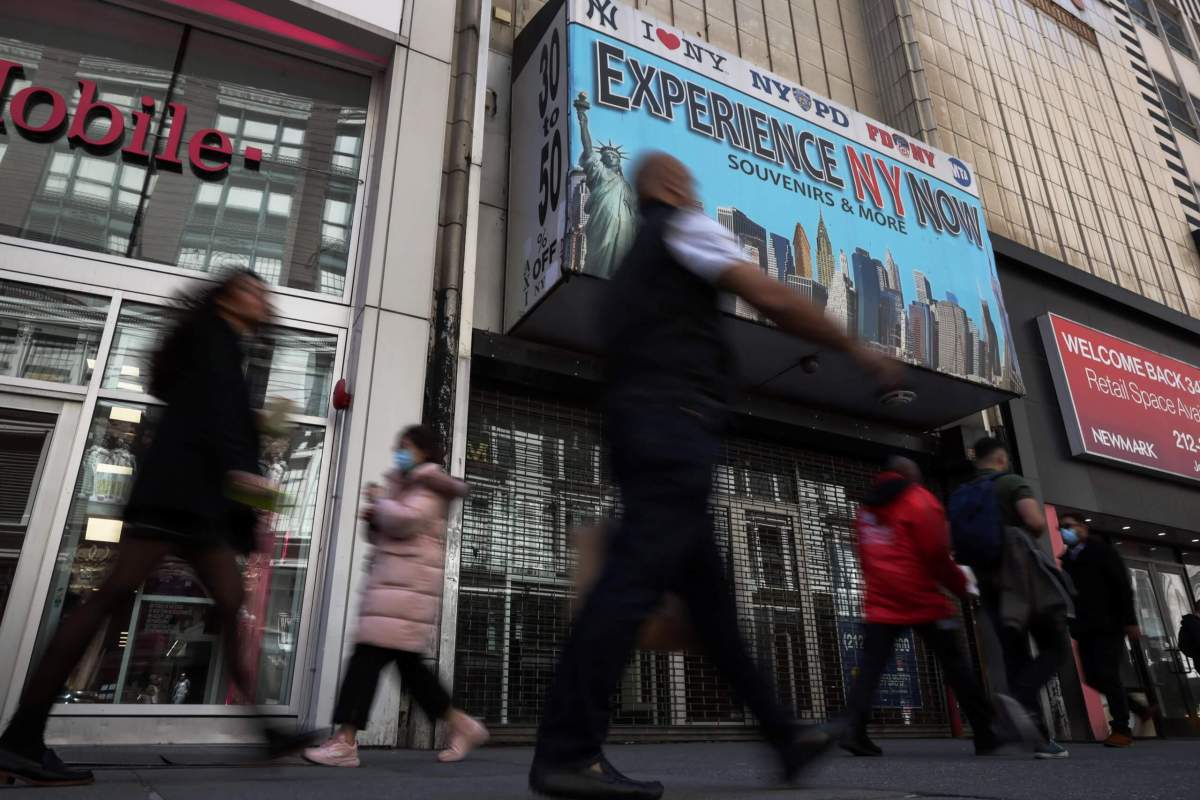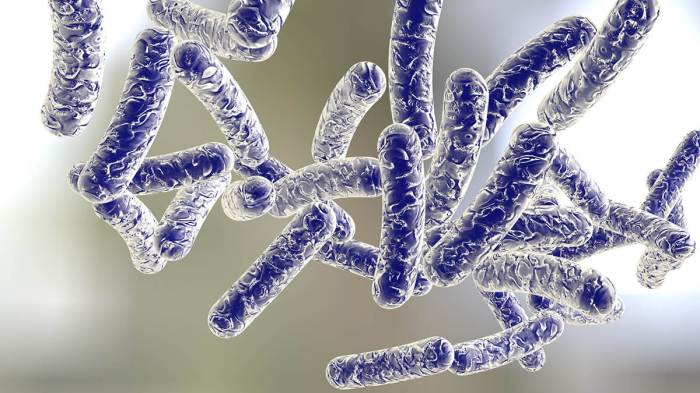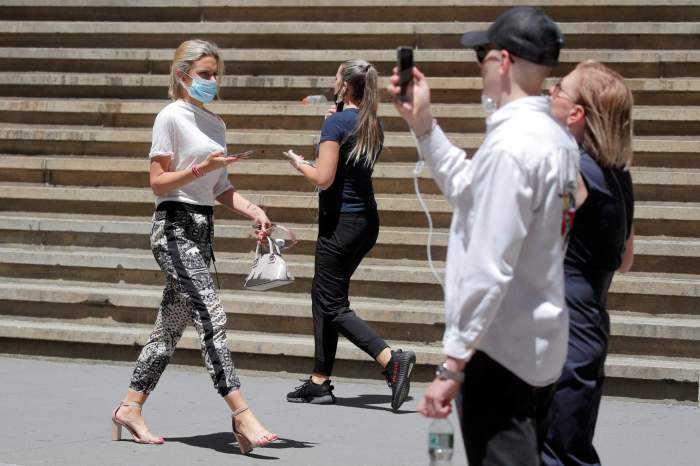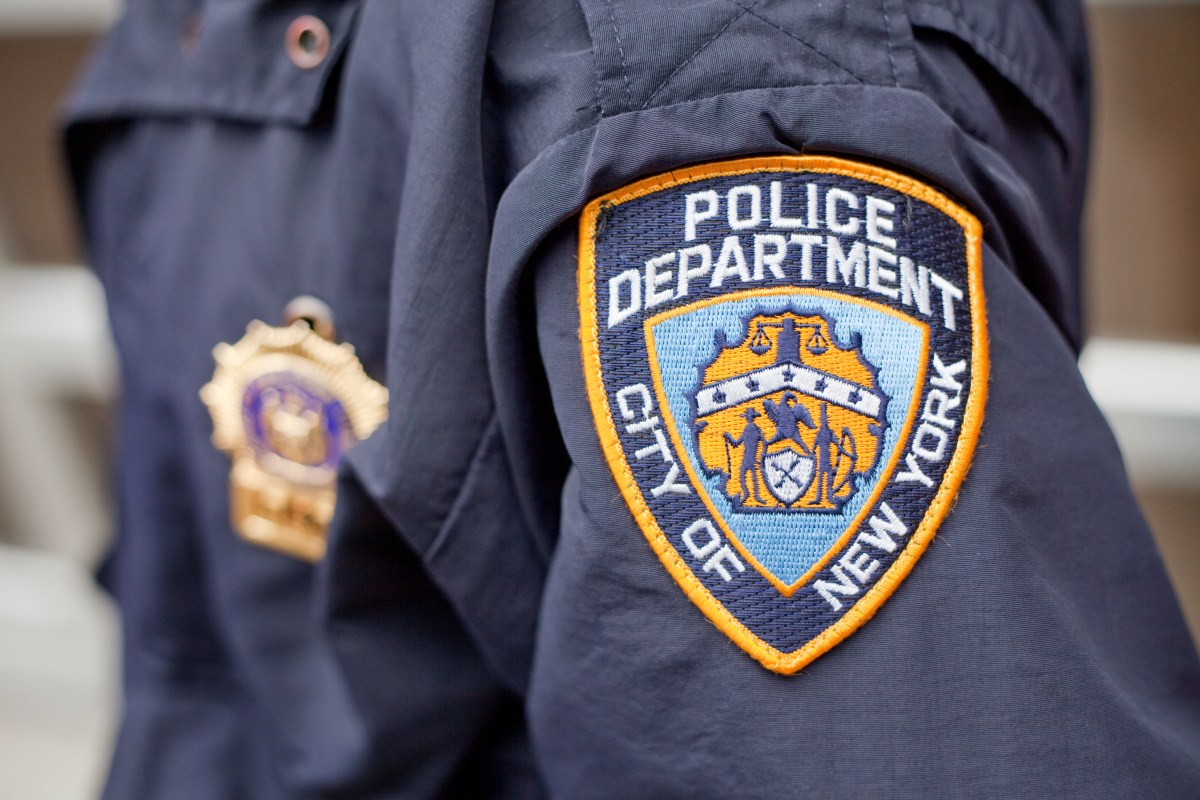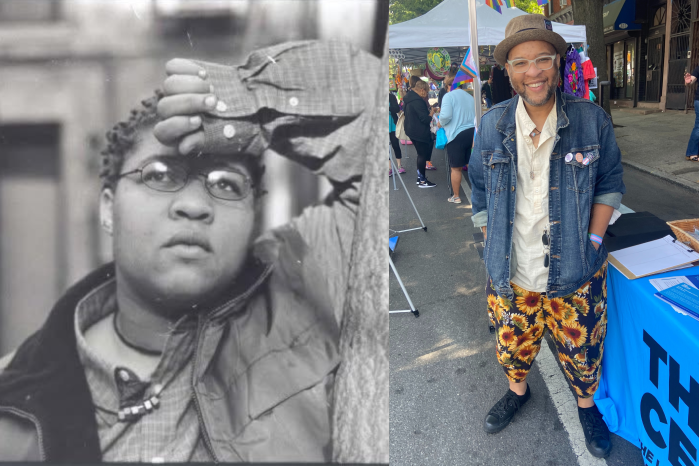COVID-19 cases are ticking upward across Queens while the numbers of infections in Manhattan appear to be dropping after climbing for many weeks.
Even with the city’s 7-day positivity rate for COVID-19 hovering just under 7%, the alert level in New York City remains low thanks to very low hospitalization and death rates, according to the latest Department of Health and Mental Hygiene.
The transmission rate held relatively steady over the past two weeks after steadily climbing since early March. As of May 1, the citywide rate stood at 191.56 cases per 100,000 residents, with Manhattan’s rate still leading the entire city at 256.22 cases per 100,000. That represents a decrease from the transmission rate of 311.84 per 100,000 reported on April 24.
Still, the transmission rate has increased on Staten Island and Queens, which reported transmission rates on May 1 of 238.58 and 200.1 per 100,000 residents, respectively.
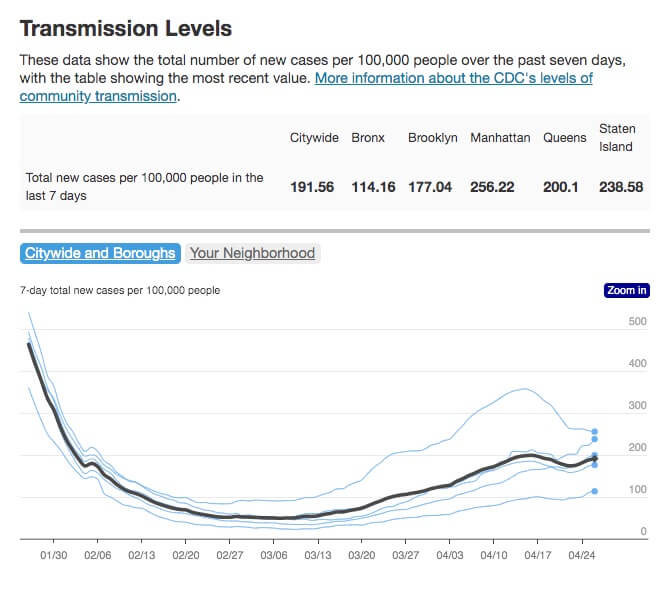
As of April 29, the city’s 7-day positivity rate was up to 6.9%, an increase from the 5.79% reported a week earlier. Yet the daily citywide hospitalization average for a 7-day period was just 40; on April 25, the Health Department reported just 21 COVID-related hospitalizations citywide.
Moreover, the weekly average number of deaths was down to just three. The city reported approximately three COVID-related deaths on April 26.
Twenty-five areas of New York City reported 100 or more new COVID-19 cases between April 20-26. While the Manhattan Valley/Morningside Heights/Upper West Side area had the most new cases again (ZIP 10025, 198 new cases, 7.72% 7-day positivity rate), Flushing/Murray Hill/Queensboro Hill, Queens (11355) surged into second place with 168 new cases, good for a 16.26% positivity.
Three other Queens neighborhoods saw 130 or more new cases over the past week: Flushing/Murray Hill (11354, 137 new cases, 18.12% 7-day positivity); Forest Hills (11375, 136 new cases, 10.91% positivity) and Elmhurst (11373, 130 new cases, 11.02% positivity).
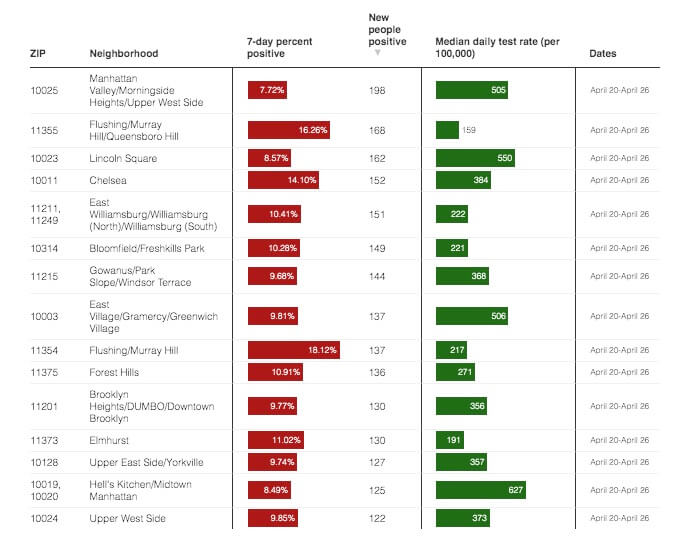
The two areas of Flushing and Murray Hill led the entire city in 7-day positivity. Seven additional Queens communities were among the 15 New York City areas with the highest 7-day positivity rates between April 20-26.
They include Bayside (11360, 16.25%, 52 new cases); Douglaston-Little Neck (11362, 11.76% positivity, 34 new cases); Kew Gardens (11415, 11.68% positivity, 39 new cases); Kew Gardens Hills/Pomonok (11367, 11.66% positivity, 64 new cases); Bellerose/Douglaston/Little Neck (11004, 11.61% positivity, 31 new cases); Whitestone (11357, 11.59% positivity, 64 new cases); and Belle Harbor/Neponsit/Rockaway Park (11694, 11.49%, 30 new cases).
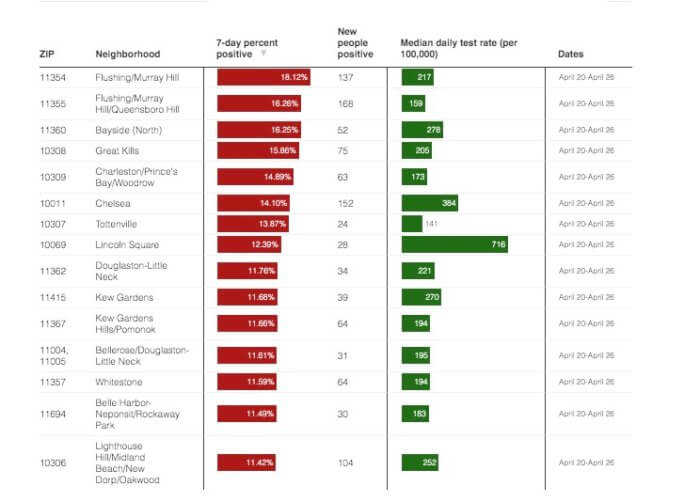
On the flip side, just five New York City areas allied fewer than 10 new COVID-19 cases between April 20-26. One area of the Financial District in Manhattan (10004) had just one infection.
The others were Battery Park City in Manhattan (10282, 4 new cases); Hunts Point, Bronx (10474, 5 new cases); City Island, Bronx (10464, 6 new cases); and Breezy Point, Queens (11697, 6 new cases).
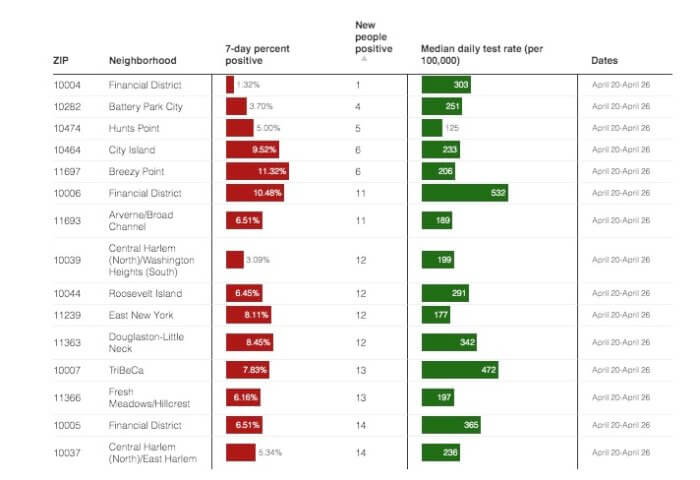
The low hospitalization and death rates serve as further evidence that the vaccines and available antiviral treatments continue to prove effective at preventing severe COVID-19 infections, thus keeping the vast majority of New Yorkers out of the hospital.
Still, even a mild COVID-19 case can prove problematic for the infected long after the infection ends, according to the CDC. Health experts continue to recommend that vaccinated New Yorkers get a booster shot, but only 37.5% of the population has received an additional dose of the virus.
For information on where to get a booster shot, visit vaccinefinder.nyc.gov.



